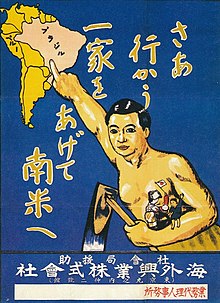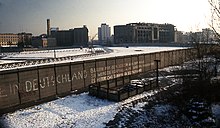
After registering steady increases during the Soviet period, the population of Armenia declined from its peak value of 3.633 million in 1992 to 2.986 million in 2017.

The Eastern Bloc, also known as the Communist Bloc (Combloc), the Socialist Bloc, and the Soviet Bloc, was the coalition of communist states of Central and Eastern Europe, Asia, Africa, and Latin America that were aligned with the Soviet Union and existed during the Cold War (1947–1991). These states followed the ideology of Marxism–Leninism, in opposition to the capitalist Western Bloc. The Eastern Bloc was often called the "Second World", whereas the term "First World" referred to the Western Bloc and "Third World" referred to the non-aligned countries that were mainly in Africa, Asia, and Latin America but notably also included former pre-1948 Soviet ally Yugoslavia, which was located in Europe.

Human capital flight is the emigration or immigration of individuals who have received advanced training at home. The net benefits of human capital flight for the receiving country are sometimes referred to as a "brain gain" whereas the net costs for the sending country are sometimes referred to as a "brain drain". In occupations with a surplus of graduates, immigration of foreign-trained professionals can aggravate the underemployment of domestic graduates, whereas emigration from an area with a surplus of trained people leads to better opportunities for those remaining. But emigration may cause problems for the home country if the trained people are in short supply there.

The Armenian diaspora refers to the communities of Armenians outside Armenia and other locations where Armenians are considered an indigenous population. Since antiquity, Armenians have established communities in many regions throughout the world. However, the modern Armenian diaspora was largely formed as a result of World War I, when the genocide which was committed by the Ottoman Empire forced Armenians who were living in their homeland to flee from it or risk being killed. Another wave of emigration started during the dissolution of the Soviet Union.

Human migration is the movement of people from one place to another with intentions of settling, permanently or temporarily, at a new location.
An asylum seeker is a person who leaves their country of residence, enters another country and applies for asylum in that other country. An asylum seeker is an immigrant who is making a claim to have been forcibly displaced and might have fled their home country because of war or other factors harming them or their family. If their case is accepted, they become considered a refugee. The terms asylum seeker, refugee and illegal immigrant are often confused.
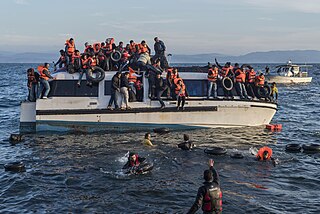
Forced displacement is an involuntary or coerced movement of a person or people away from their home or home region. The UNHCR defines 'forced displacement' as follows: displaced "as a result of persecution, conflict, generalized violence or human rights violations".
A skilled worker is any worker who has special skill, training, knowledge which they can then apply to their work. A skilled worker may have learned their skills through work experience, on-the-job training, an apprenticeship program or formal education. These skills often lead to better outcomes economically. The definition of a skilled worker has seen change throughout the 20th century, largely due to the industrial impact of the Great Depression and World War II. Further changes in globalisation have seen this definition shift further in Western countries, with many jobs moving from manufacturing based sectors to more advanced technical and service based roles. Examples of formal educated skilled labor include engineers, scientists, doctors and teachers, while examples of informal educated workers include crane operators, CDL truck drivers, machinists, drafters, plumbers, craftsmen, cooks and bookkeepers.

Russian Americans are Americans of full or partial Russian ancestry. The term can apply to recent Russian immigrants to the United States, as well as to those who settled in the 19th century Russian possessions in northwestern America. Russian Americans comprise the largest Eastern European and East Slavic population in the U.S., the second-largest Slavic population generally, the nineteenth-largest ancestry group overall, and the eleventh-largest from Europe.
Immigration law includes the national statutes, regulations, and legal precedents governing immigration into and deportation from a country. Strictly speaking, it is distinct from other matters such as naturalization and citizenship, although they are sometimes conflated. Countries frequently maintain laws that regulate both the rights of entry and exit as well as internal rights, such as the duration of stay, freedom of movement, and the right to participate in commerce or government.
Illegal emigration is departure from a country in violation of emigration laws. Countries often seek to regulate who departs a country for diverse reasons, such as stopping criminals from leaving, preventing labor shortages and capital flight, and averting brain drain. The simplest case is when a country prohibits certain persons from physically leaving. Another common situation is when a person legally goes abroad but refuses to return when demanded by his or her country of origin.

Immigration is the international movement of people to a destination country of which they are not usual residents or where they do not possess nationality in order to settle as permanent residents. Commuters, tourists, and other short-term stays in a destination country do not fall under the definition of immigration or migration; seasonal labour immigration is sometimes included, however.

Immigration to Turkey is the process by which people migrate to Turkey to reside in the country. Many, but not all, become Turkish citizens. After the dissolution of the Ottoman Empire and following Turkish War of Independence, an exodus by the large portion of Turkish (Turkic) and Muslim peoples from the Balkans, Caucasus, Crimea, and Greece took refuge in present-day Turkey and moulded the country's fundamental features. Trends of immigration towards Turkey continue to this day, although the motives are more varied and are usually in line with the patterns of global immigration movements. Turkey's migrant crisis is a following period since the 2010s, characterized by high numbers of people arriving and settling in Turkey.
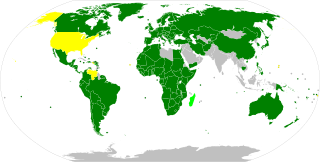
The Protocol Relating to the Status of Refugees is a key treaty in international refugee law. It entered into force on 4 October 1967, and 146 countries are parties.

After World War II, emigration restrictions were imposed by countries in the Eastern Bloc, which consisted of the Soviet Union and its satellite states in Central and Eastern Europe. Legal emigration was in most cases only possible in order to reunite families or to allow members of minority ethnic groups to return to their homelands.
Azerbaijan though not a popular destination for immigrants, has recently experienced waves of immigration with the collapse of the Soviet Union, especially from ethnic Azerbaijanis mostly from Armenia, Russia and the rest of the former Soviet Union. Meskhetian Turks were also relocated to Azerbaijan from Central Asia before and after the end of the Soviet Union. With the booming petroleum industry, immigration from Turkey has also followed. In 2010, every eighth resident in Azerbaijan was a migrant, of whom more than 90% of them are Azerbaijanis and 70% are internally displaced persons from the territories occupied by Armenia.
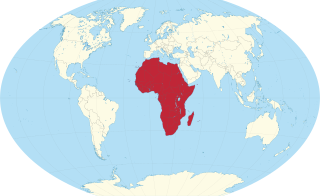
During the period of 1965 – 2021, an estimated 440,000 people per year emigrated from Africa; a total number of 17 million migrants within Africa was estimated for 2005. The figure of 0.44 million African emigrants per year pales in comparison to the annual population growth of about 2.6%, indicating that only about 2% of Africa's population growth is compensated for by emigration.

The Russian language is spoken natively by a considerable proportion of the population of Israel, mostly by immigrants who came from the former Soviet Union from 1989 onwards. It is a major foreign language in the country, and is used in many aspects of life. Russian is the third most common native language in Israel after Modern Hebrew and Arabic. Government institutions and businesses often also provide information and services in Russian, and has effectively become semi-official in some areas with high concentration of Russian-speaking immigrants. The Russian-speaking population of Israel is the world's third-largest population of Russian native-speakers living outside the former Soviet Union territories after Germany and the United States, and the highest as a proportion of the population. As of 2013, 1,231,003 residents of the Post-Soviet states have immigrated to Israel since the fall of the Soviet Union. As of 2017, there are up to 1.5 million Russian-speaking Israelis out of total population of 8,700,000 (17.25%).
Third country resettlement or refugee resettlement is, according to the UNHCR, one of three durable solutions for refugees who fled their home country. Resettled refugees have the right to reside long-term or permanent in the country of resettlement and may also have the right to become citizens of that country.
